GuitarPlayer Verdict
Whether you play plugged or unplugged, one of these two Billy Strings signature models will meet your needs. Which you choose depends on your purpose and your budget. If you’ve got the green and are going for a natural acoustic tone, the D-28 is the clear winner. If you’re on a budget and/or want to plug in right out of the box, then the DX-2E is the better match.
Pros
- +
Fantastic playability, punchy tone (D-28)
- +
Fantastic playability, strong amplified tone, superb value (DX-2E)
Cons
- -
No pickup option (D-28)
- -
Neck may feel a bit small and fast for traditional D-28 fans (both)
You can trust Guitar Player.
Billy Strings is the hottest thing happening in the acoustic arena, and his signing with Martin for a pair of signature models is a huge deal. The D-28 Billy Strings is his take on arguably the most iconic American acoustic guitar of all time. The Mexican-made DX-2E promises similar String-iness while being far more accessible financially.
Martin introduced both at the 2025 NAMM Show, and even though the dire lack of humidity in Southern California during that wildfire-plagued time wreaked havoc on every guitar’s action, I could tell there was something special about the playability of this pair and didn’t hesitate to request both for a full review.
The Martin Dreadnought has ruled the bluegrass scene since the days of Billy’s prized 1940 D-28, and since Strings has ascended to rule said scene it’s high time he got his own signature line. While the materials and country of origin differ, the DX-2E Billy Strings shares the same key specifications as its American cousin.
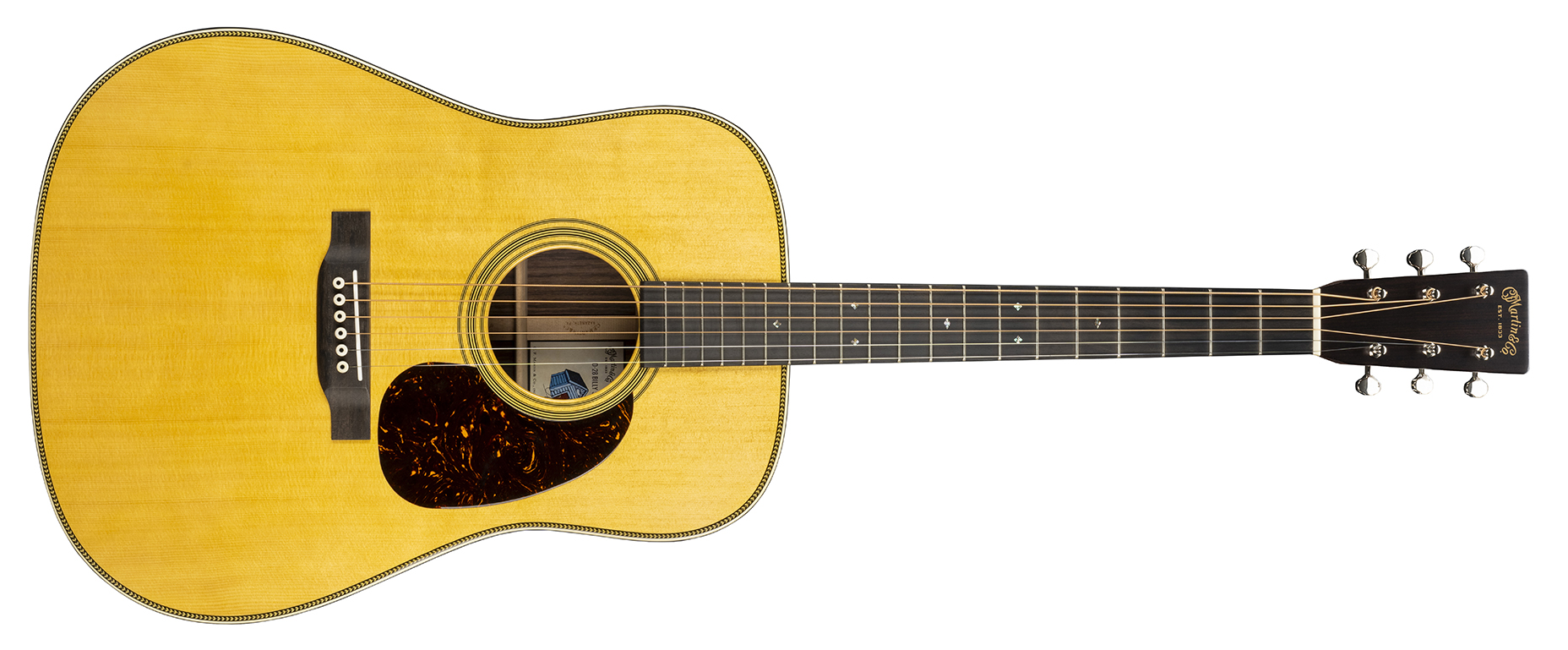
Strings is a true Martin aficionado, and it’s well worth the while to consider Billy’s choices about what specs work best for working players right now. He notably chose to honor the D-28 rather than going with a D-18, which some bluegrassers favor for the strident tonal nature of mahogany back and sides. The D-28’s rosewood gives it a chunkier tone, which this reviewer appreciates, as one can always get a more strident tone by plucking closer to the bridge.
Nut width is the next interesting consideration. Strings went with 1 23/32 inches, which equates to about 1.72 inches. That’s slightly narrower than the modern standard 1.75 inches, and yet not quite as narrow as some dreads of yore that measured 1.69 inches at the nut. Another significant specification modification Strings made was a scale length of 25 inches. That’s another ’tweener spec falling in-between the Martin standard of 25.4 inches and the shorter scale of 24.75 found on some classic dreadnoughts such as the Gibson J-45.
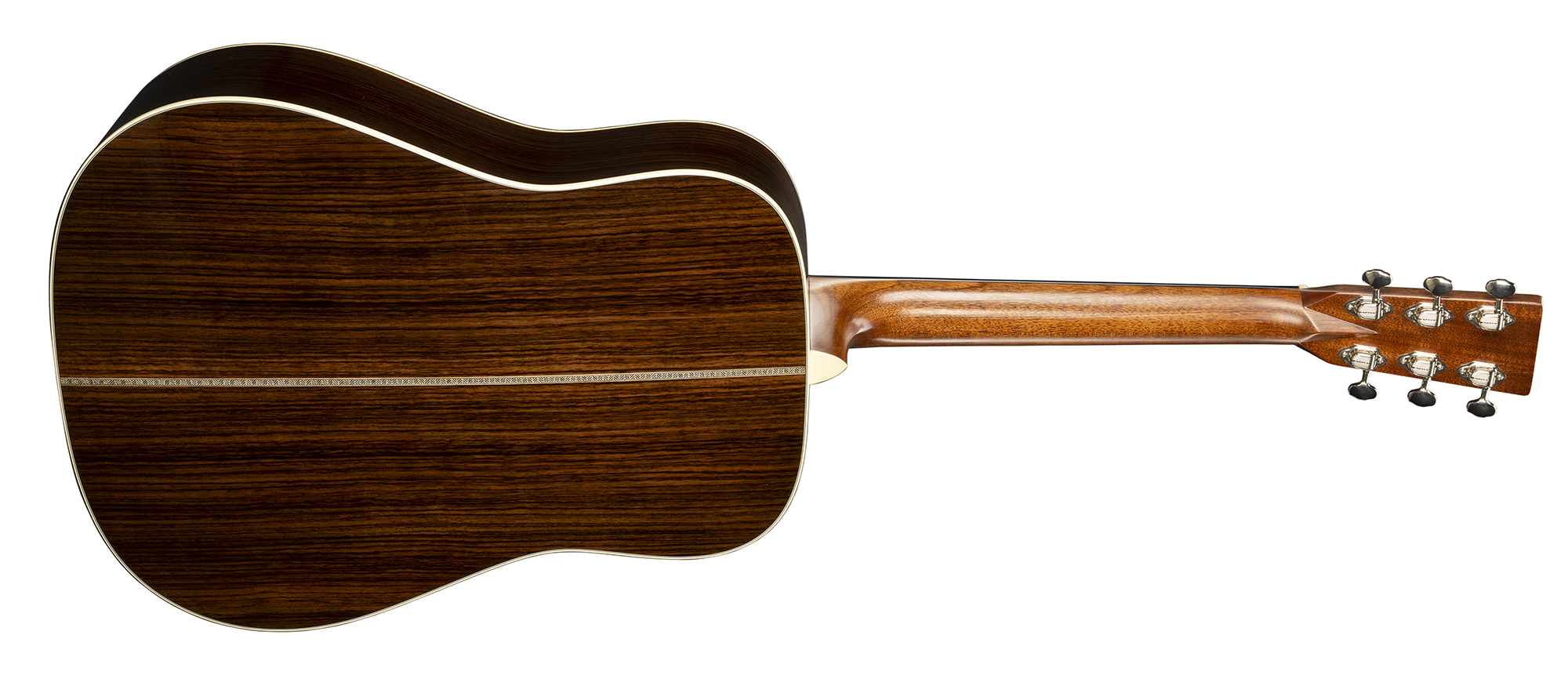
Those specs contribute heavily to fantastic playability on both instruments. I’m no bluegrass boy, but even in my hands I found a few blue-chip licks falling easily under the fingers on this neck with a profile Martin describes as “modified low oval.”
Playing with a plectrum the notes seem to flow readily and rapidly. Action from the factory was more than satisfactory. Dig in, and the frets don’t splat out. Well, they did a bit when I employed an aggressive fingerstyle attack via acrylic nails on the DX-2E, which comes with light strings and plays almost as well (but understandably not quite as perfectly) as the D-28.
All the latest guitar news, interviews, lessons, reviews, deals and more, direct to your inbox!
The nut being just slightly narrower than normal made it more comfortable for my relatively small hand on the fretboard, without becoming too cramped to accommodate for playing fingerstyle with my plucking hand when I felt like it. Having a slightly shorter scale length brings the frets a bit closer together, making barre chords, for example, easier to make and hold. It also makes string bending a bit easier.
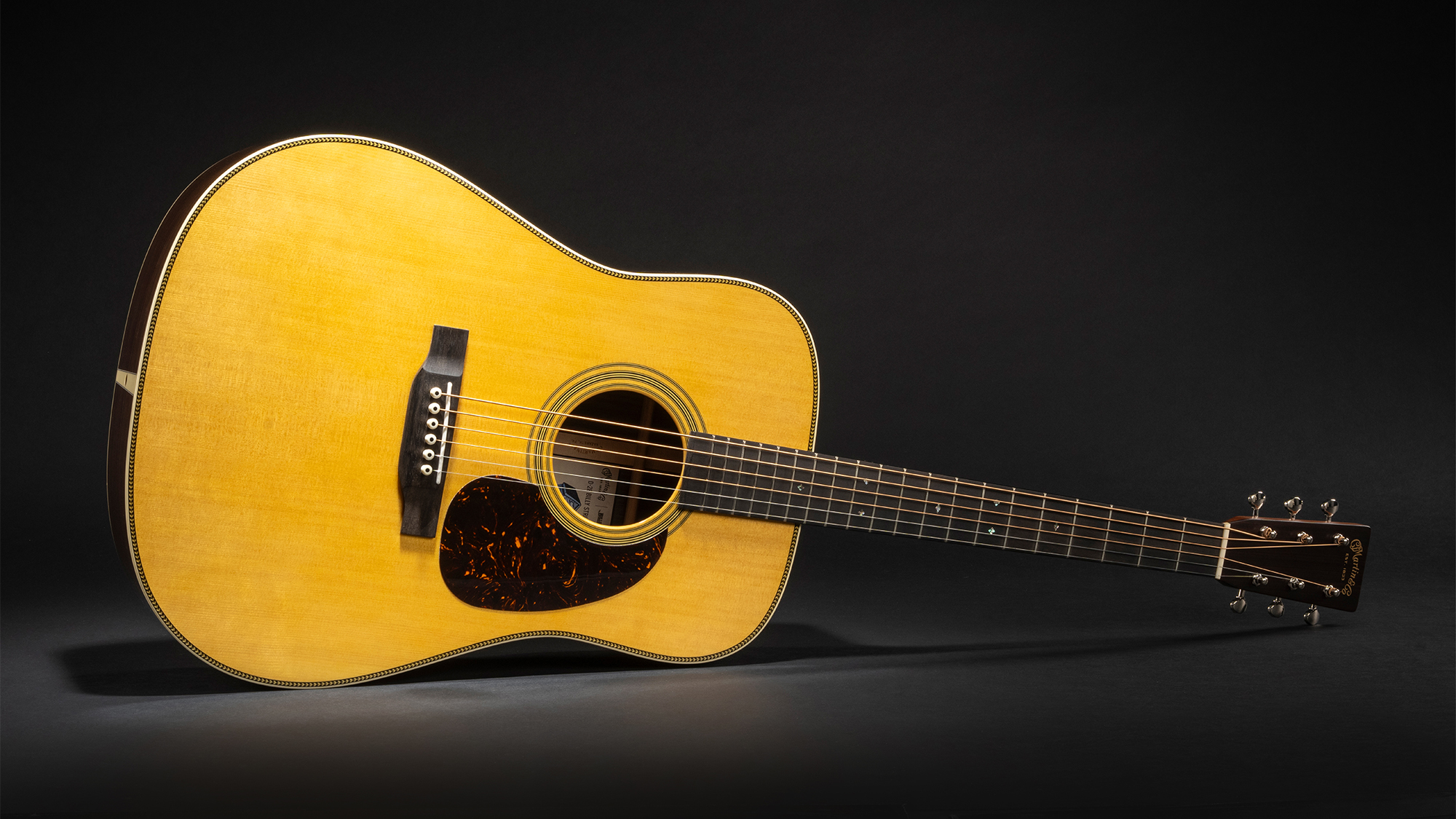
But the scale length is not so short as to make the medium-gauge wires feel like rubber bands—there’s still plenty of snap on these Strings. It’s funny how these dreadnoughts somehow feel smaller than they are, and the reduced scale length is probably the reason why, or at least a significant factor.
The D-28’s tone is like a fastball down the middle. It’s exactly what you expect from a Martin Dreadnought with fantastic balance. It’s not overly boomy as some dreads can be, the top end is present but never brittle, and there’s a meaty middle range at the heart of the matter. The D-28 Billy Strings seems particularly punchy and focused in that range. It’s not particularly open sounding right out of the box, but I’ll bet it blossoms beautifully over time.
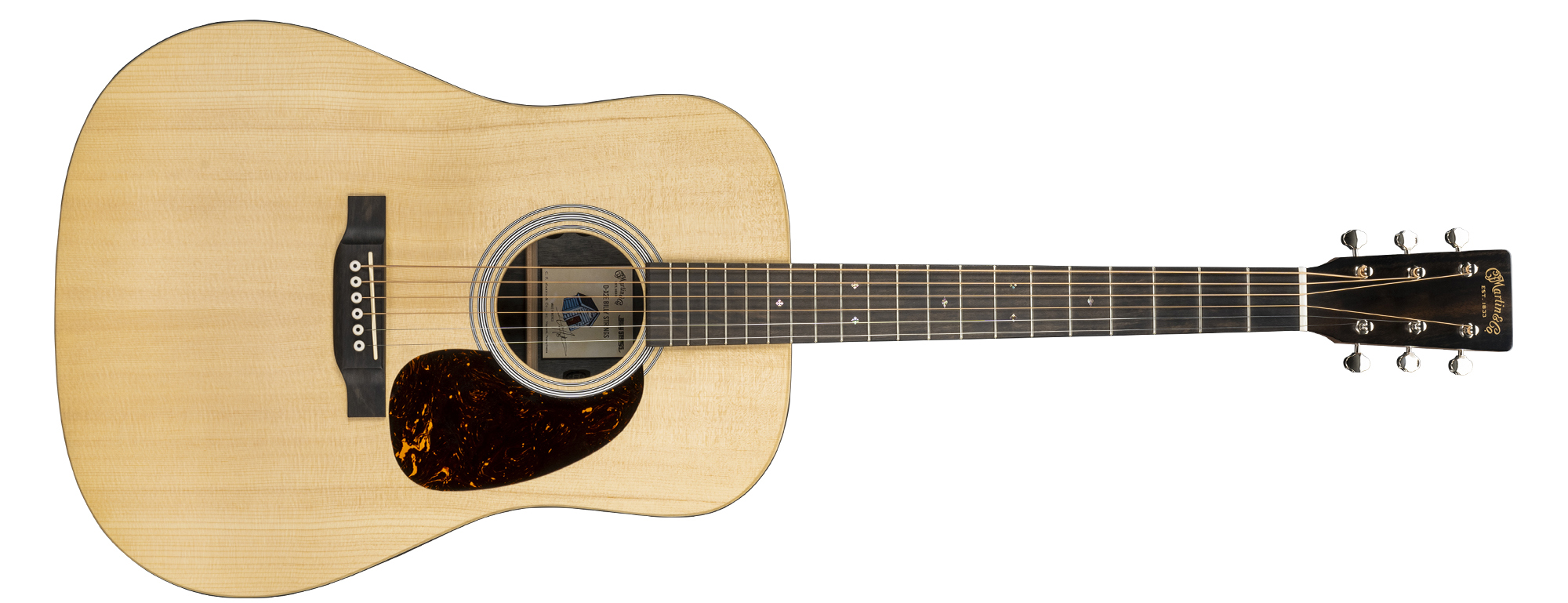
The DX-2E’s tone is essentially a lighter version of the D-28. Both have solid spruce tops, but instead of solid rosewood back and sides, the DX-2E has a veneer of high-pressure laminate Brazilian rosewood. The resulting tone is thinner, but HPL is actually more durable than solid wood, making it a great troubadour companion.
The DX-2E also comes equipped with electronics, which the D-28 notably does not. The system is a Martin E1, which consists of an undersaddle piezo pickup, and a preamp with volume and tone controls tucked under the upper lip of the sound hole. On the bottom of the unit lie two buttons, one for a phase flip and another that kicks on the tuner. It’s stealthily stashed inside the lower lip of the sound hole where the player can see it but the audience can’t. I felt the M1 system did a fine job of delivering a strong acoustic-electric tone while offering killer tuner convenience.

Which Billy Strings model is more aesthetically appealing is mostly a matter of taste. The D-28 has a look that honors its historic heritage. The aged-top toner and glossy finish as well as its herringbone trim give it a classy, time-honored appearance. The DX-2E mixes in elements that bring a more modern aesthetic, such as a natural top with practically no finish, and black rosette rings. The patterns in the Brazilian rosewood on the back of each DX-2E are unique. The one on this review unit is pretty cool, but some of them I’ve seen at the NAMM Show and online are quite stunning. It’s worth a visit to a Martin dealer for the ability to browse.
Which model is right for a particular player depends on purpose and budget. If you’ve got the green and are going for a natural acoustic tone, the D-28 is the clear winner. If you’re on a budget and/or want to plug in right out of the box, then the DX-2E is the better match.
I was surprised that the D-28 wasn’t even listed with an optional pickup choice, which is quite strange considering that Strings is famous not only for his blistering acoustic-electric live tone but also for employing a pedalboard full of effects. When I asked Martin luminary Fred Greene about it at the NAMM Show, his response was that for the D-28, Billy essentially wanted to keep it traditional.
Billy Strings is clearly a Martin lifer. He’s been playing a Martin Dreadnought since he was a kid admiring his father’s D-93, and he’s highly likely to be playing one well past the time when his own baby boy, River, who was born just last fall, has matured into a full-grown man. It’s easy to envision the D-28 Billy Strings becoming an heirloom acoustic to be passed down from one generation to the next.
And if you’re simply looking to get a quality instrument into the hands of a youngster or a beginner at any age who will appreciate the modifications Billy has made for optimal playability, then the DX-2E fits the bill perfectly. Having either of his signature models around the house will make it a musical haven —just like the Strings’ homestead— for years to come.
Martin D-28 Billy Strings
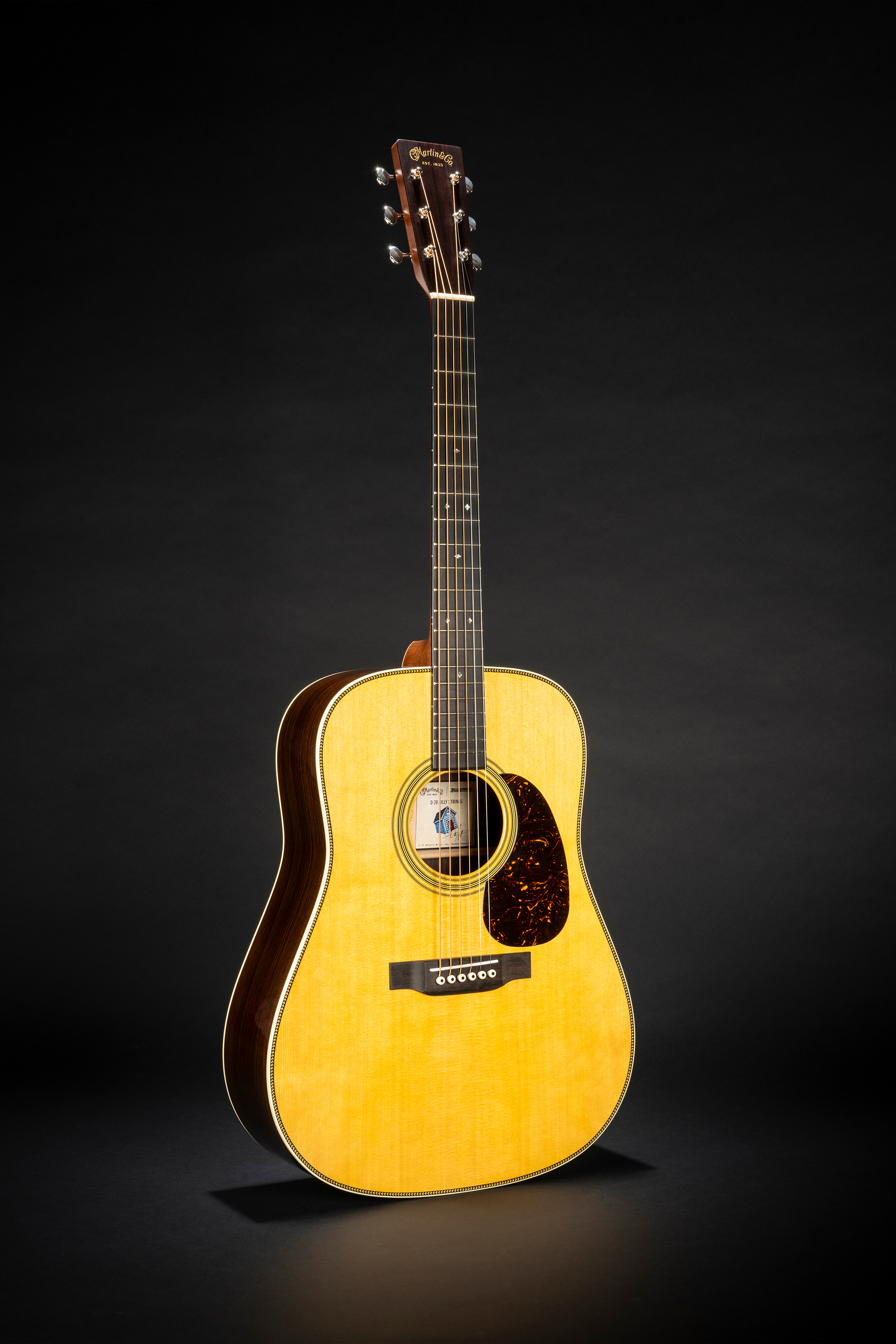
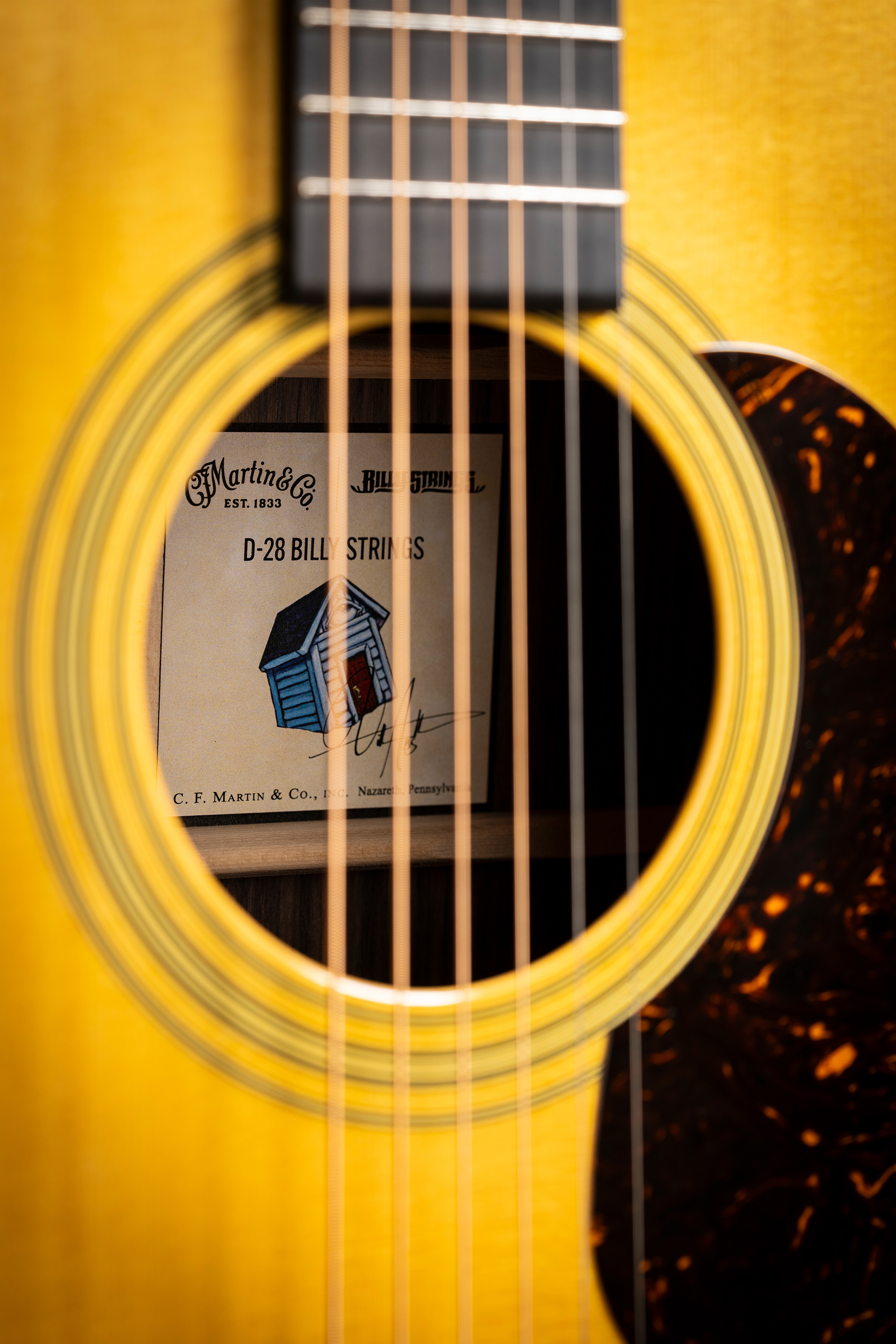
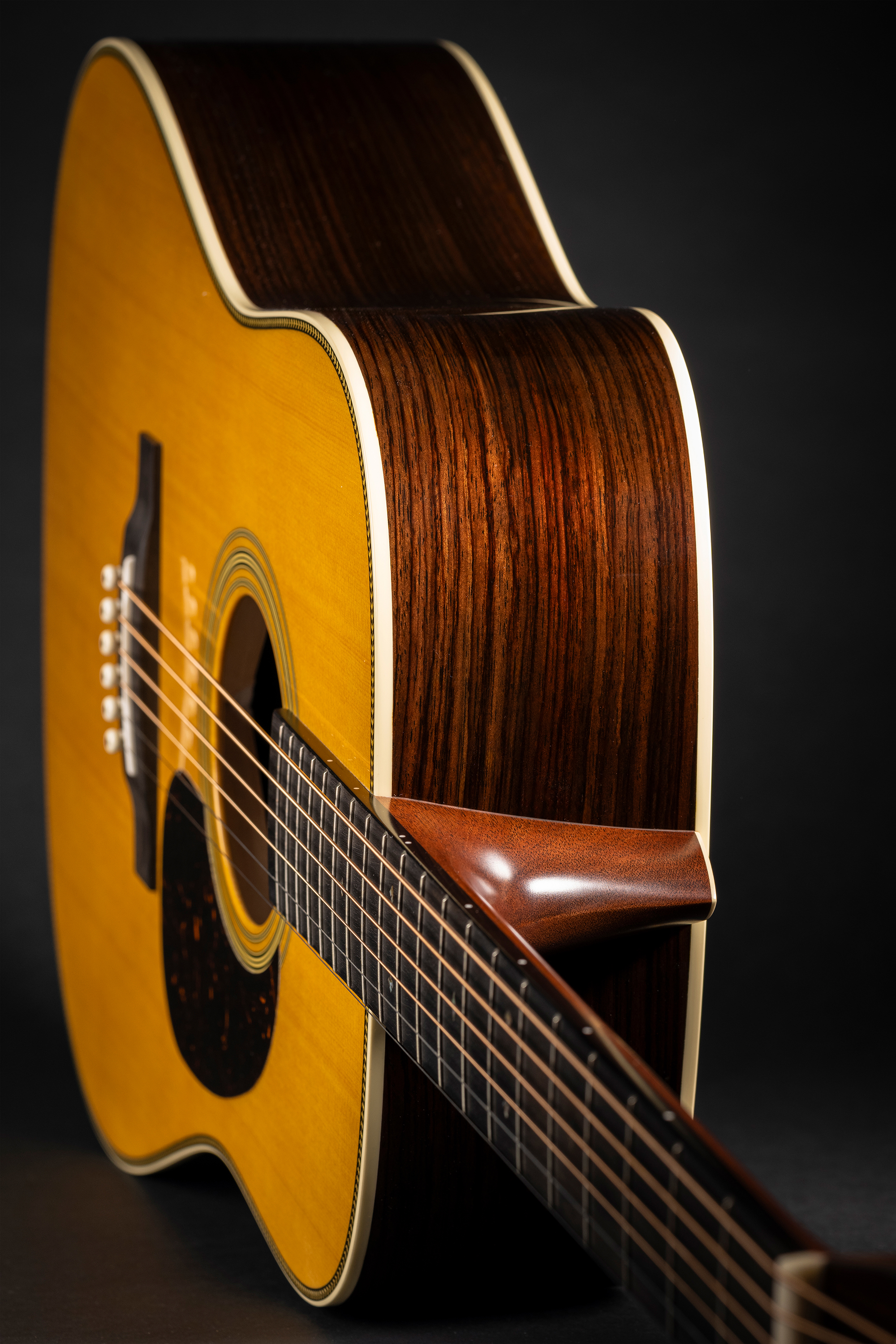
CONTACT martinguitar.com
PRICE $3,799 with hardshell case
NUT WIDTH 1.72", bone
NECK Mahogany, modified low oval profile, dovetail joint
FRETBOARD Ebony with abalone inlays (diamond and square), 25" scale
FRETS 20
TUNERS Nickel enclosed gear with butterbean knobs
BODY Solid East Indian rosewood back & sides, solid spruce top
BRIDGE Ebony with compensated bone saddle
ELECTRONICS None
FACTORY STRINGS Martin Authentic Acoustic Lifespan 2.0 Phosphor Bronze Medium gauges .013—.056
WEIGHT 3.6 lbs (as tested)
BUILT USA
KUDOS Fantastic playability, punchy tone
CONCERNS No pickup option strange considering Strings’ affinity for plugging in and using effects. Neck may feel a bit small and fast for traditional D-28 fans
Martin DX-2E Billy Strings
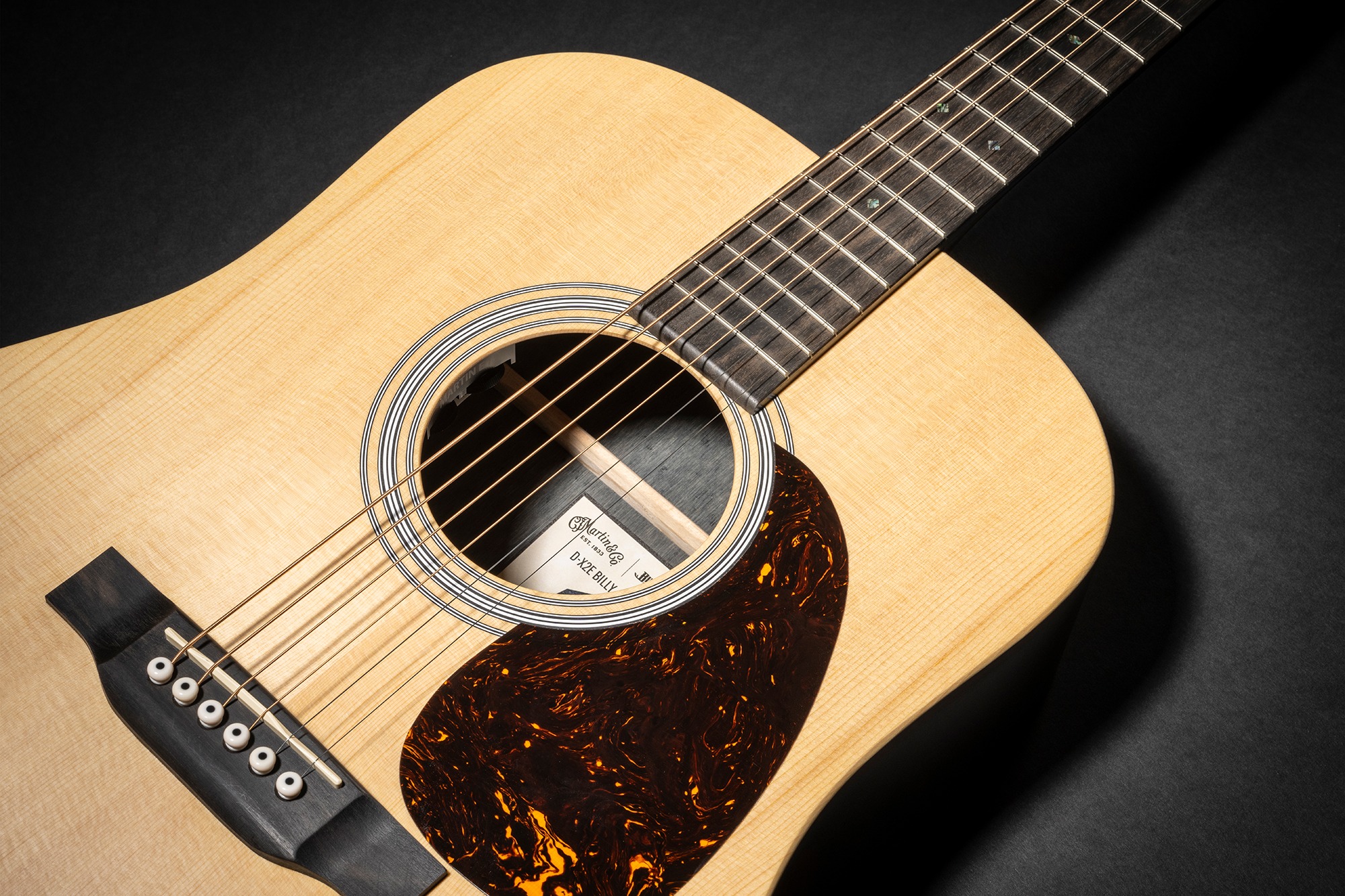
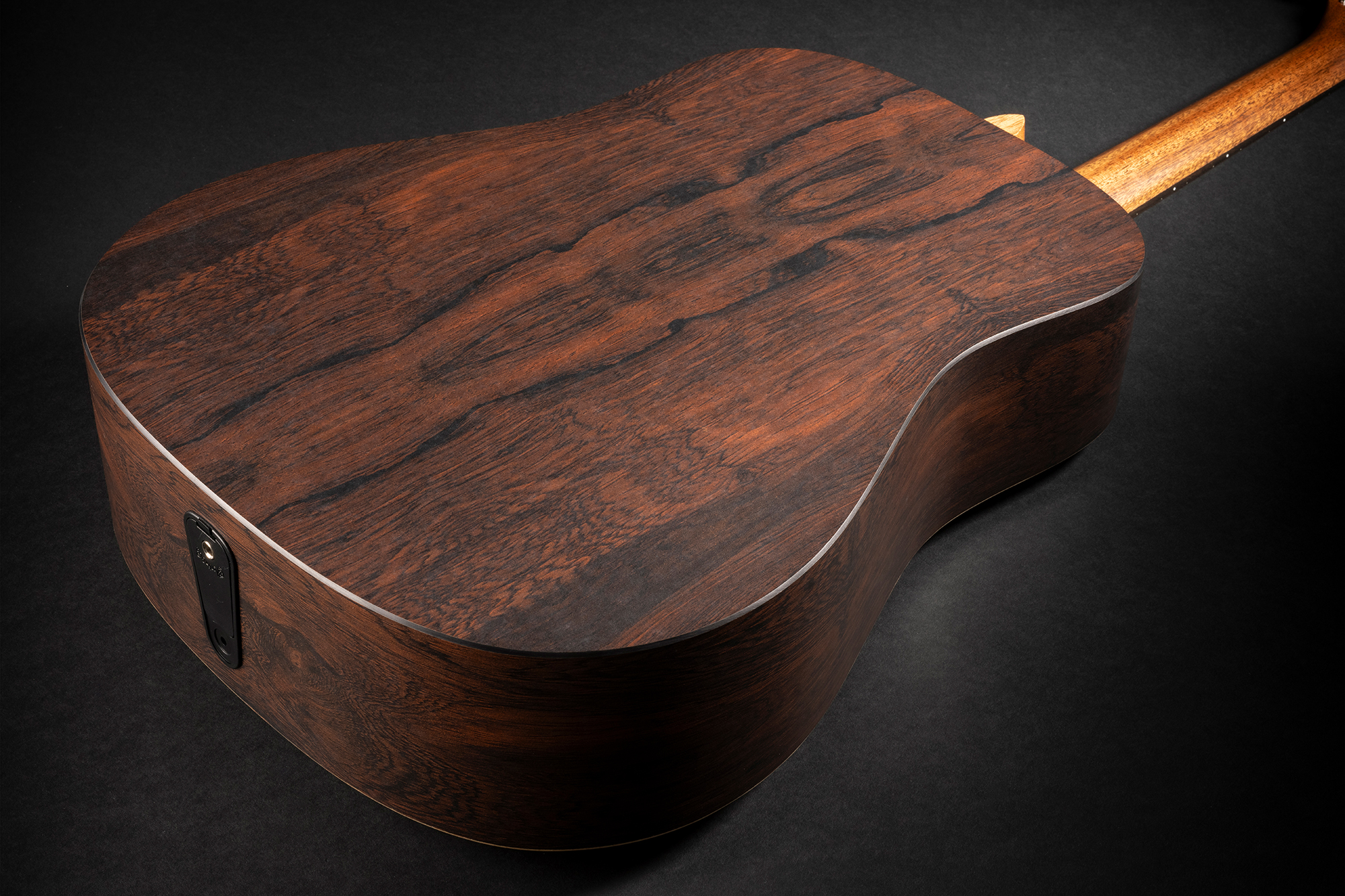
DX-2E Billy Strings
CONTACT martinguitar.com
PRICE $899 street with custom hemp softshell case
NUT WIDTH 1.72", white corian
NECK Select hardwood, mortise & tenon joint
FRETBOARD Ebony, 25" scale
FRETS 20
TUNERS Nickel open gear with butterbean knobs
BODY Brazilian rosewood high pressure laminate back & sides, solid spruce top
BRIDGE Ebony with compensated white Tusq saddle
ELECTRONICS Martin E1 with volume and tone flywheel controls plus tuner on/off and phase buttons in upper lip of sound hole; tuner in lower lip
FACTORY STRINGS Martin Authentic Acoustic Lifespan 2.0 Light gauges .012—.054
WEIGHT 3.7 lbs (as tested)
BUILT Mexico
KUDOS Fantastic playability, strong amplified tone, superb value
CONCERNS Neck may feel a bit small and fast for traditional D-28 fans
Jimmy Leslie is the former editor of Gig magazine and has more than 20 years of experience writing stories and coordinating GP Presents events for Guitar Player including the past decade acting as Frets acoustic editor. He’s worked with myriad guitar greats spanning generations and styles including Carlos Santana, Jack White, Samantha Fish, Leo Kottke, Tommy Emmanuel, Kaki King and Julian Lage. Jimmy has a side hustle serving as soundtrack sensei at the cruising lifestyle publication Latitudes and Attitudes. See Leslie’s many Guitar Player- and Frets-related videos on his YouTube channel, dig his Allman Brothers tribute at allmondbrothers.com, and check out his acoustic/electric modern classic rock artistry at at spirithustler.com. Visit the hub of his many adventures at jimmyleslie.com



